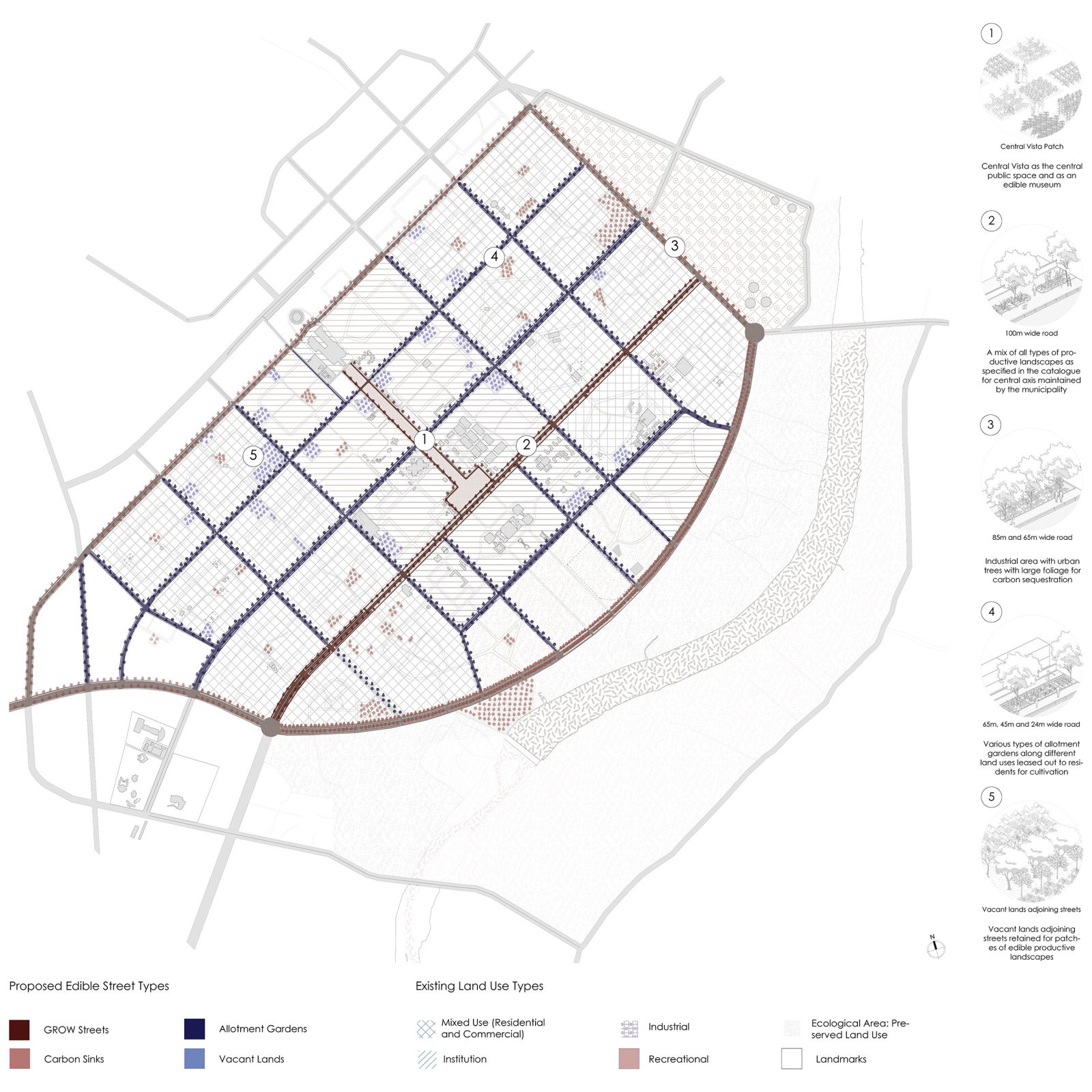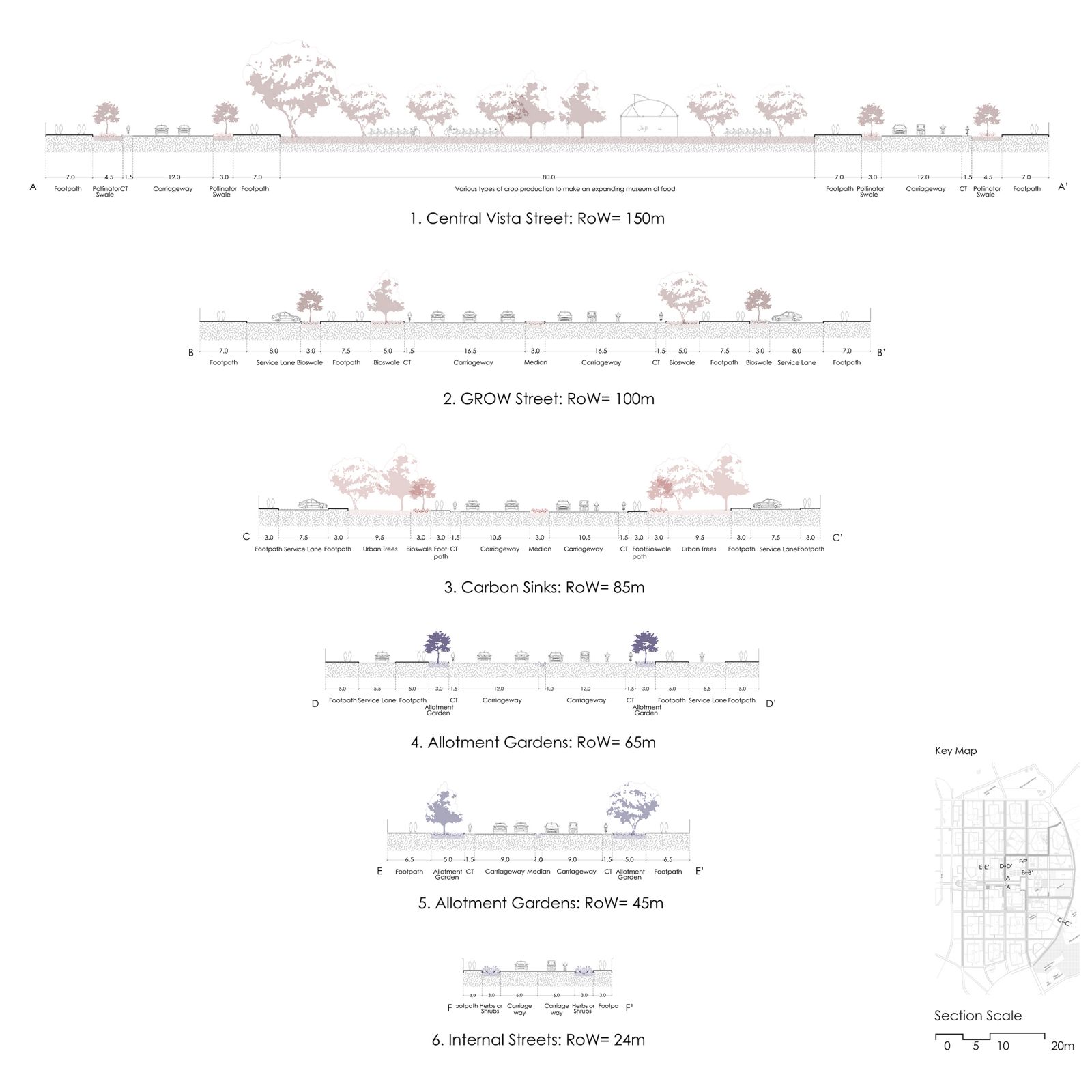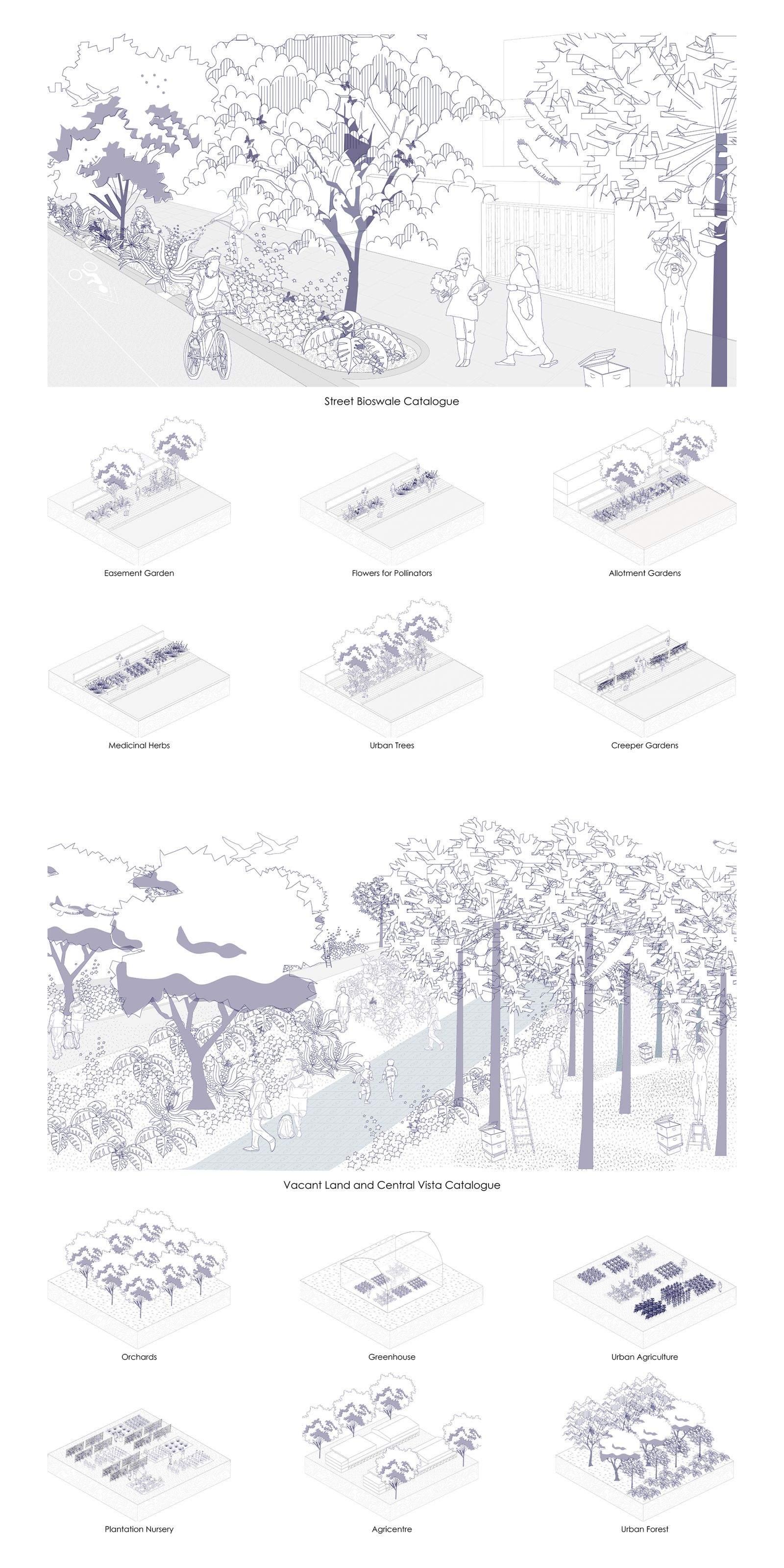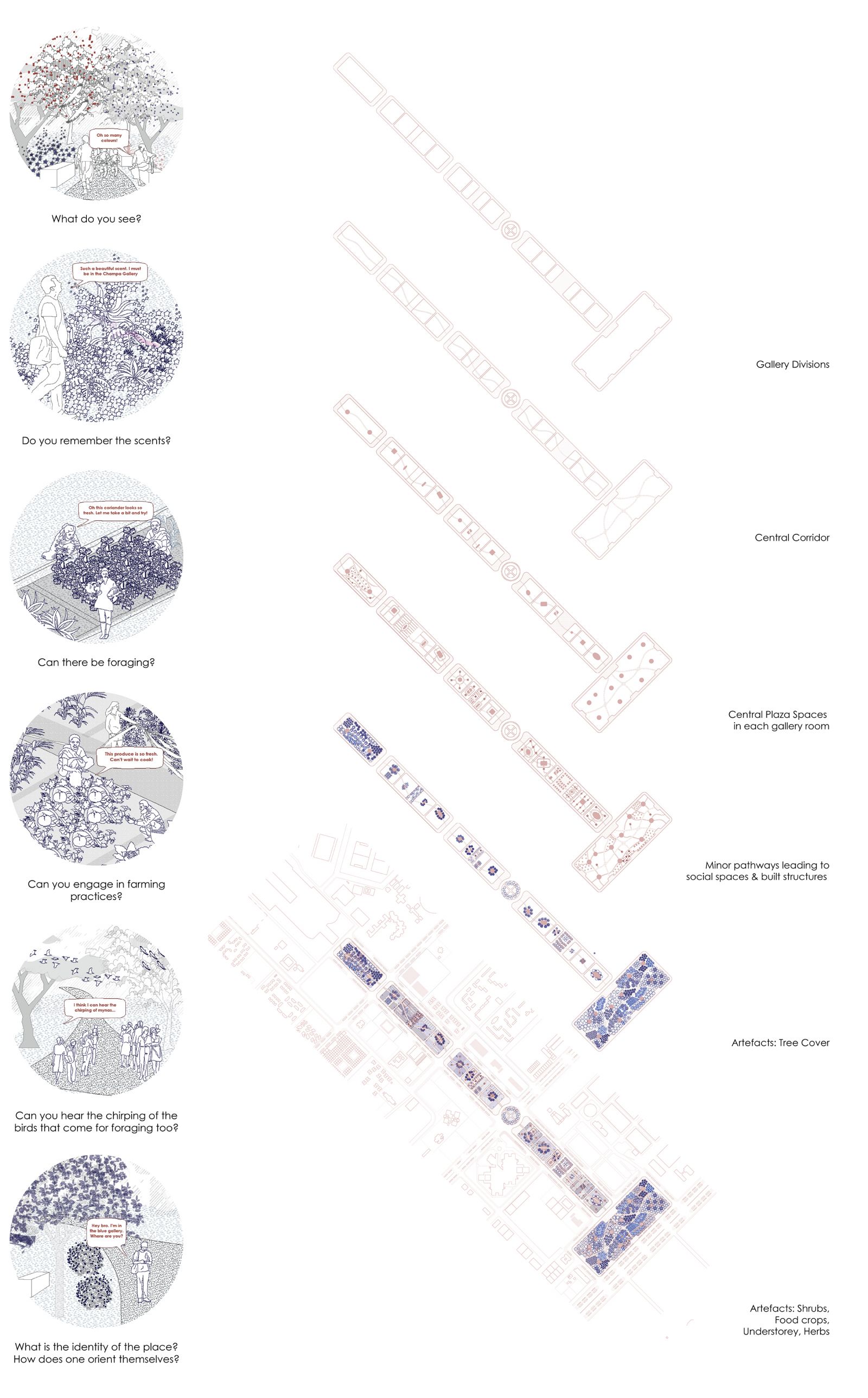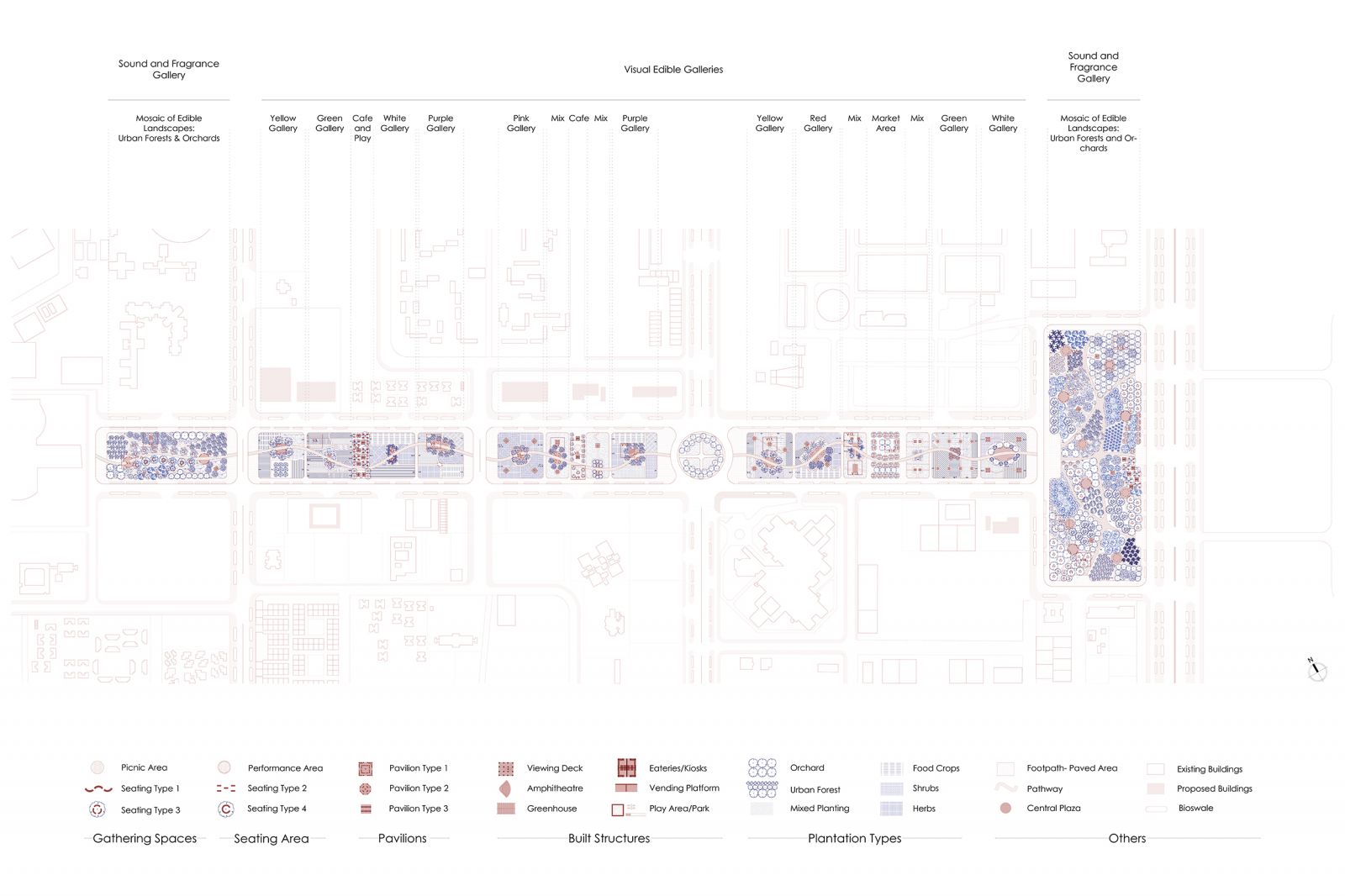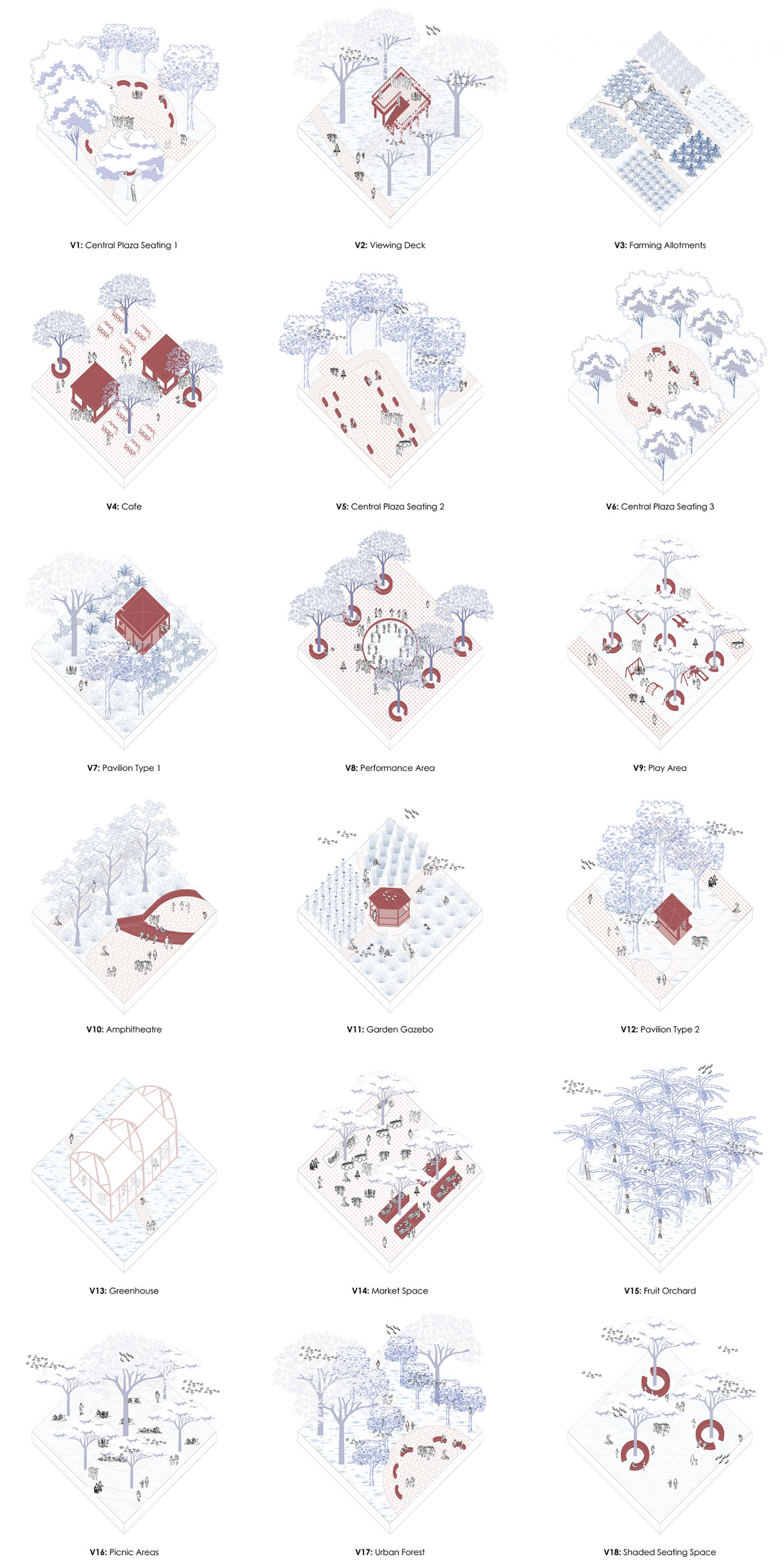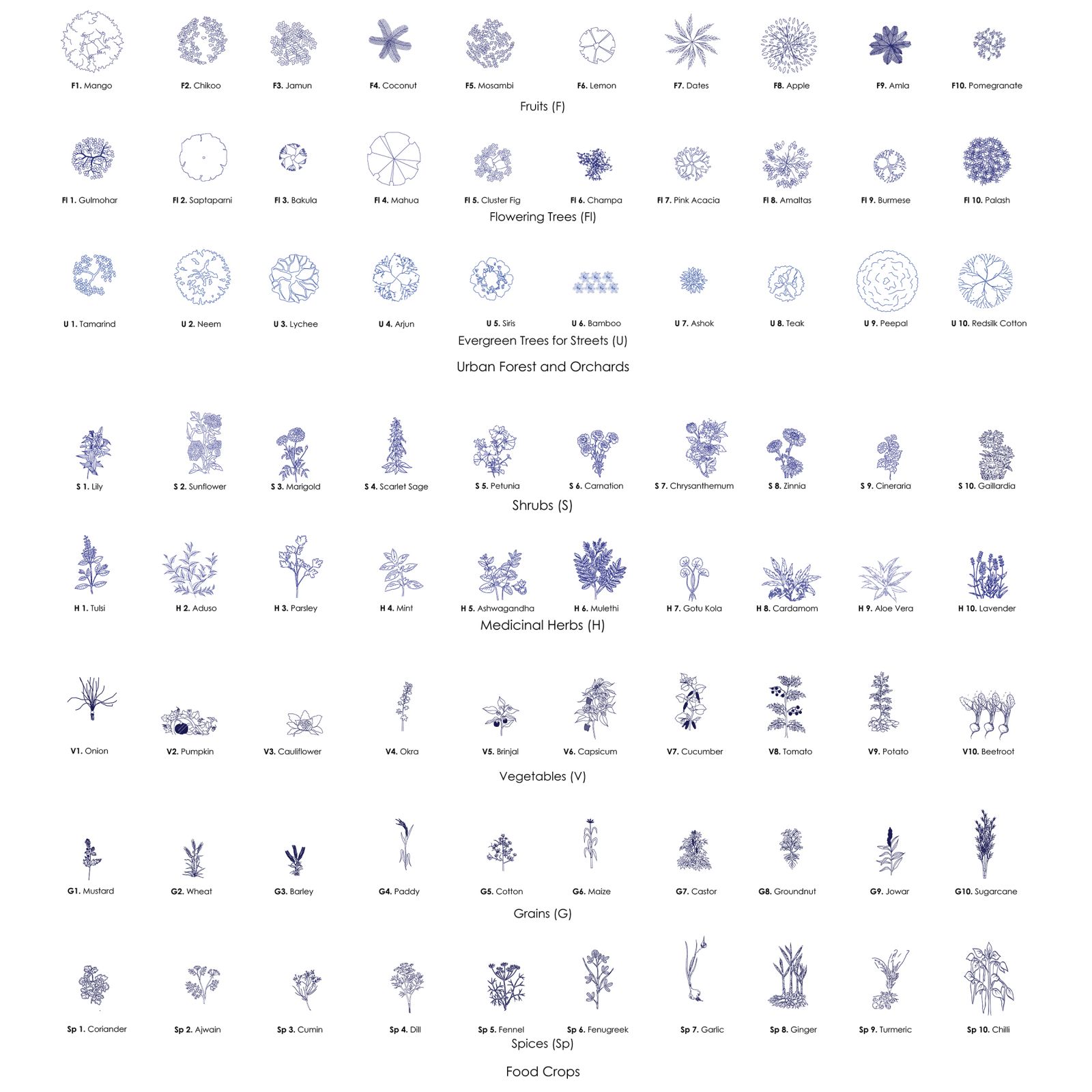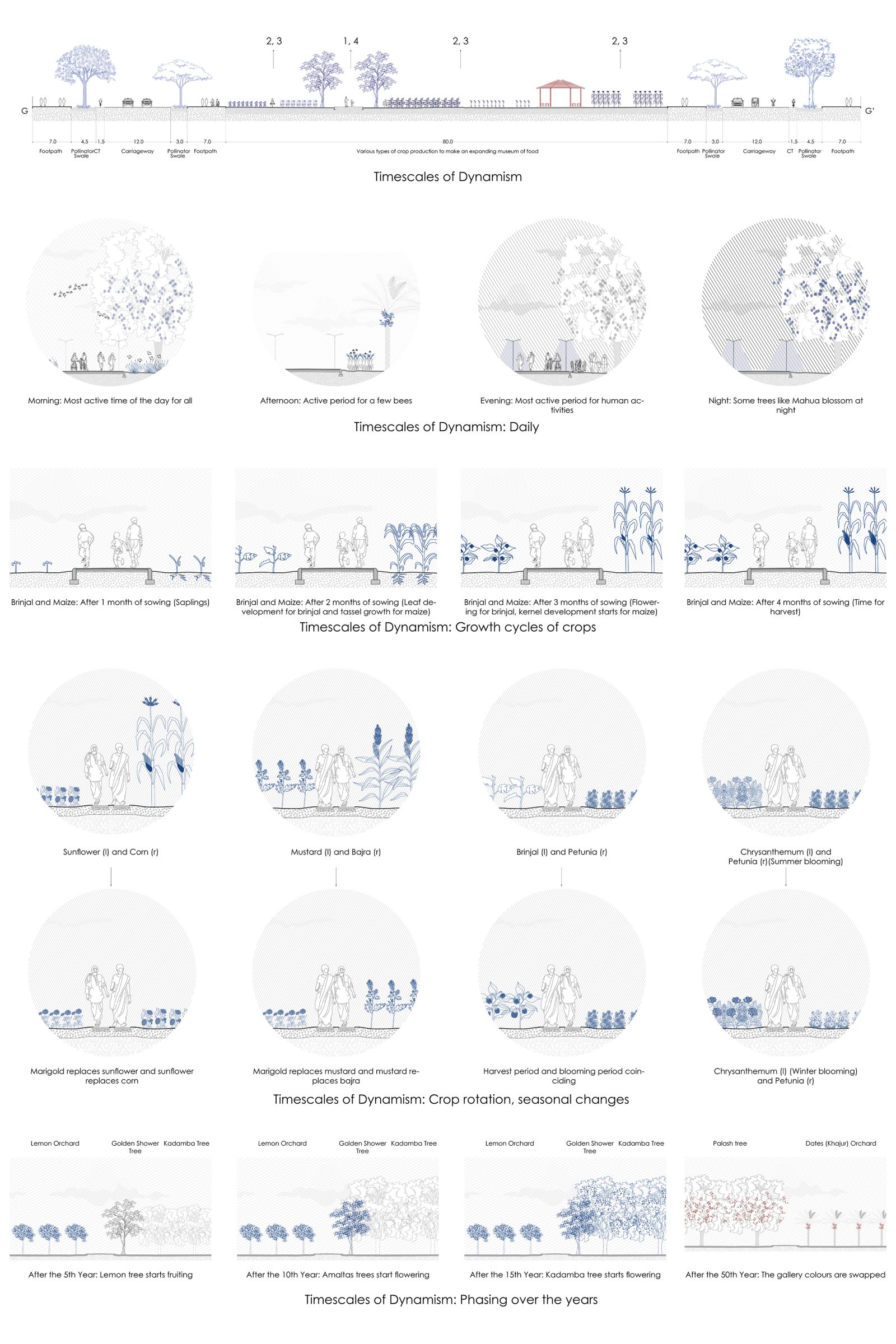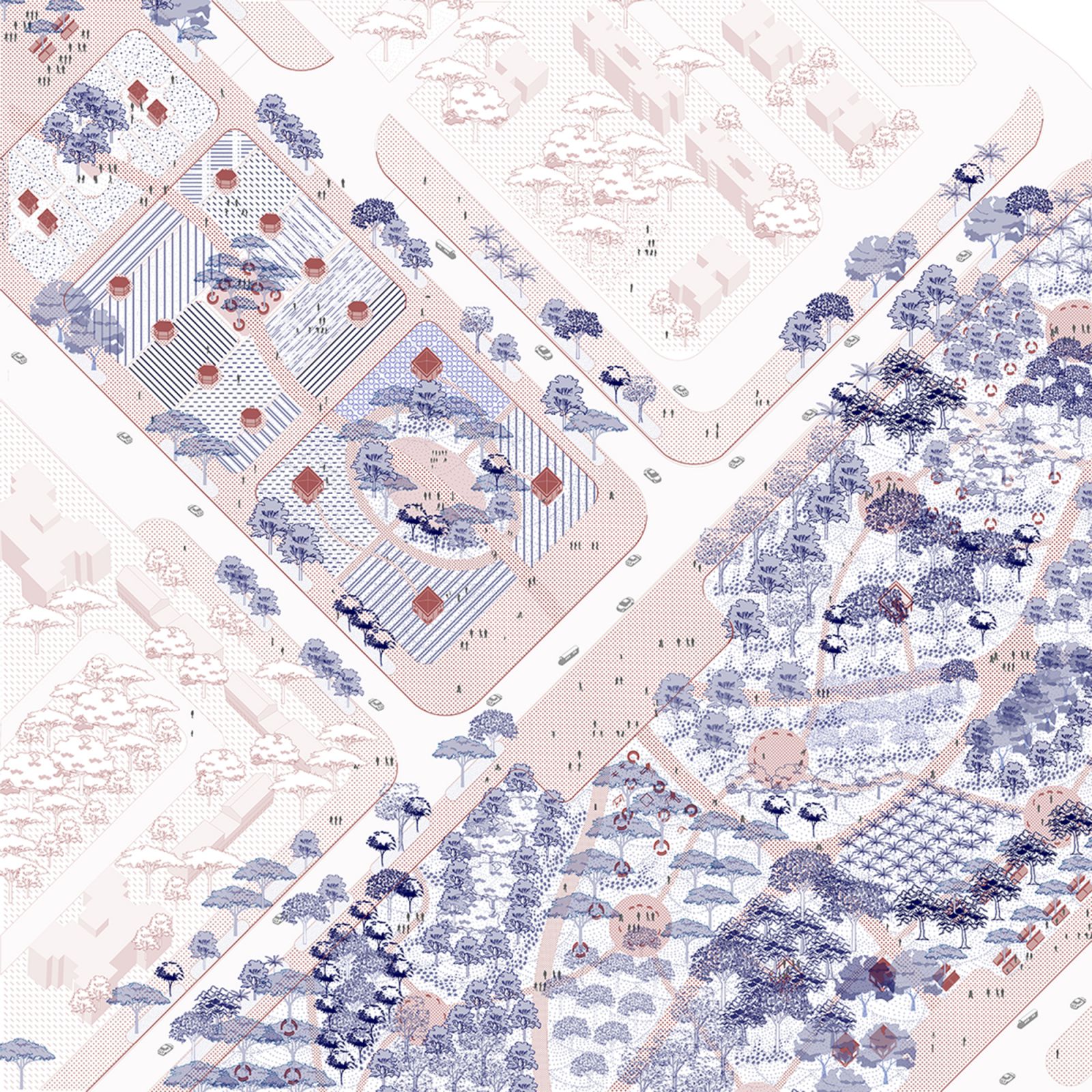Edible Museum
- Student C APARNAA
- Code UD0716
- Faculty Planning
- Tutor/s Mansi Shah,Chandrani Chakrabarti
- TA Chandani Patel
Cities are economic machines that create opportunities for people to earn a living. The increased urbanization expropriates the agriculture intensive land in the city’s periphery and shifts the food production and distribution systems further from the city. This exacerbates the demand for food production, food miles and concomitant obliviousness of the relation between humans and their environment. Furthermore, the landscapes within the city contribute to this issue as well. Widely regarded as ‘The Green City’ because of its monumental landscapes, the city of Gandhinagar consists of landscaped areas like the central vista and the block/sector street edges that aren’t being utilized to their full potential, overlooking their socio-ecological aspects.
Thus, the project questions if food can be made visible and integrated with urban landscape especially on corridors and central vista. It can have multiple benefits - can provide space for citizens to actively participate, can bring trees and vegetation in the public domain, and give people access to growing and foraging for food, can sequester carbon, it could repurpose swaths of vacant land into edible spaces, mitigate stormwater run-off, as well as support other species such as birds, bees, butterflies etc. The Central Vista extends the theme of the edible street as a visible and programmed landscape to showcase the diversity of plant, fruit and tree species naturalised to this context and climate.
The project exhibits the prominence of the Central Vista as the central public space of the city and creates landmarks on various streets with respect to the edible museum. The prominence is attained through a dynamic museum with a mosaic of edible for many landscapes which enhances the socio-ecological relation by actively engaging people with programs proposed, while also benefiting economically and ecologically.
